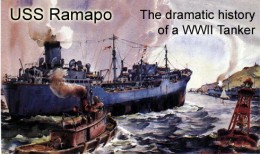 The days of giving a ship a name with meaning may soon be a thing of the past. It seems only inevitable that the USS Microsoft, or the USS PizzaHut, will become the norm as naming rights help foot the bill for navy vessels in the same way Metlife and Citi have nailed nameplates to sport stadiums.
The days of giving a ship a name with meaning may soon be a thing of the past. It seems only inevitable that the USS Microsoft, or the USS PizzaHut, will become the norm as naming rights help foot the bill for navy vessels in the same way Metlife and Citi have nailed nameplates to sport stadiums.
But that day has not yet come, and the tradition of naming navy vessels goes back to the 1700s, but it was in 1819 that the process for naming navy ships was formalized –
“… shall be named by the Secretary of the Navy, under the direction of the President of the United States, according to the following rule, to wit: those of the first class shall be called after the States of this Union; those of the second class after the rivers; and those of the third class after the principal cities and towns…”
This is how the USS Ramapo, named after the Ramapo River, came to be christened in 1919. It was a navy oiler, used primarily to transport oil, but assuming additional duties as well.
The USS Ramapo had an adventuresome life.
In 1933, sailors on the USS Ramapo reported the largest wave ever seen, 112ft in height. It was described as a rogue wave, towering over the other waves. A naval officer on the bridge of the 478-foot oiler happened to be up on the bridge and calculated the wave’s height.
Rogue waves in the past were often believed in 1933 to be the stuff of legend or exaggerated tales from the sea, but more modern technology and events have proven their existence. The sailors of the USS Ramapo saw the rogue wave, stayed calm enough to measure it, and cool enough to live through it.
The next adventure for the Ramapo was a date that will live in infamy, the attack on Pearl Harbor. The USS Ramapo did not take a direct hit, but was there and responded. Official reports of USS Ramapo sailors, submitted afterwards, can be read online at
The USS Ramapo, in 1942, was no spring chicken. The ship would eventually be decommissioned in 1946, but in WWII she was still sailing the seas.
The Aleutian campaign in WWII was a vital front to prevent any possibility of Alaska being lost and becoming a base for forgein attacks on to the mainland. It was a brutal environment, and American sailors regularly braved fierce storms and freezing cold, such was the situation for the USS Ramapo and the USS Wasmuth .
On December 27th, 1942, the USS Wasmuth on an escort mission lost two depth charges during a storm, and the charges detonated under the ship. It was apparent that the ship would soon sink into the freezing waters, taking 136 people down with it.
Commander Homann of the USS Ramapo, battling the gale storm, came to the rescue. Sailing along side the USS Wasmuth, the crew of the USS Ramapo battled for over three hours in the treacherous, stormy waters, as they transferred all the crew to safety; no crewmen were lost.
The USS Wasmuth sank, and the USS Ramapo was retired in 1946.
Additional Link:

Nice, Hazegray (nickname for the ship color) has histories of most US Navy ships.
http://www.hazegray.org/danfs/auxil/ao12.htm
Ramapo (AO-12), built under U.S. Shipping Board contract, was laid down 16 January 1919 bv the Newport News Shipbuilding & Dry Dock Co., Newport News, Va.; launched 11 September 1919); and commissioned 15 November 1919. Lt . Comdr. J. D. Smith, USNRF, in command.
Assigned to Caribbean shuttle runs after commissioning, Ramapo carried petroleum products from Port Arthur, Tex., to Guantanamo Bay and the Canal Zone until April 1920. Then she extended her range and through 1921 delivered fuel to ships and bases on the gulf and east coasts and in European waters. Transferred to the Pacific in 1922, Ramapo carried oil to ships and stations of the Pacific Fleet and made occasional trips to the Canal Zone and to the east coast until mid-1928, when she began to supply the Asiatic Fleet on a regular schedule. Beginning on 21 June, she carried oil from San Pedro to the Philippines and China and, for the next 9 years, averaged four round-trips annually. En route she performed collateral duties as a survey ship and collected data in central and western Pacific island groups for the Hydrographic Office.
In late 1937, Ramapo briefly interrupted her transpacific runs to discharge oil to ships and stations in the Aleutians, then resumed runs to the Orient, continuing them until the spring, of 1941 when she was shifted to Hawaiian shuttle service. At Pearl Harbor when the Japanese attacked on 7 December, the tanker returned to San Pedro and made two round-trips to Bora Bora before resuming Alaskan shuttle runs. Arriving at Kodiak 29 July 1942 on her first such run since 1937, she plied between Port Townsend and various mainland and Aleutian stations throughout World War II, completing her last run at Seattle 23 September 1945. On the 27th, she steamed south and on the 30th reported at San Francisco for inactivation. Decommissioned 10 January 1946, Ramapo was struck from the list 21 January and transferred to the Maritime Commission 1 July.
Ramapo received one battle star for World War II service.